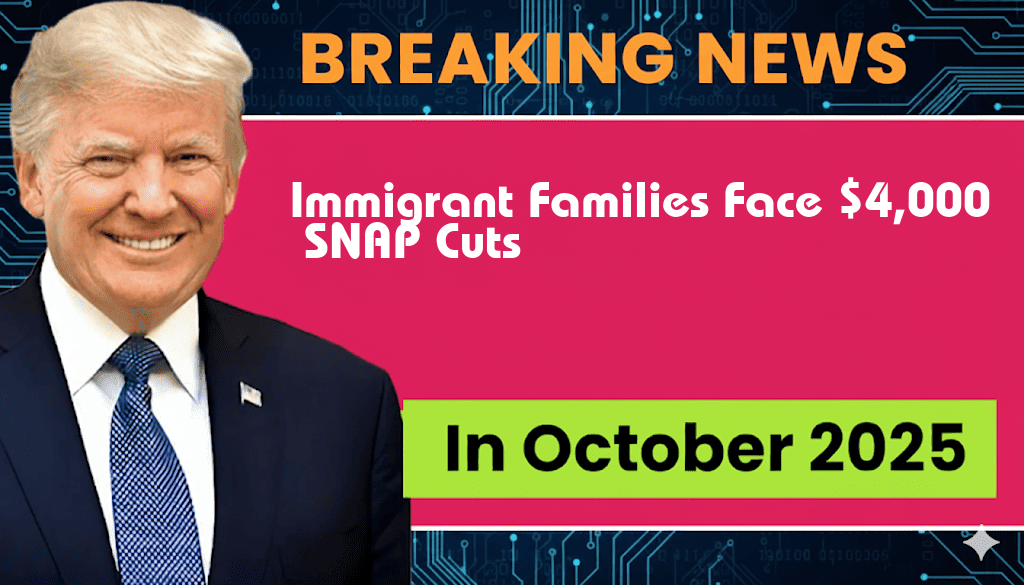Recent changes to the eligibility criteria for the Supplemental Nutrition Assistance Program (SNAP) may put immigrant families at risk of losing up to $4,000 in benefits annually. As states grapple with budget constraints and policy shifts, many families could face significant food insecurity as a result of these cuts. The adjustments, aimed at reducing costs and streamlining the program, are expected to disproportionately affect low-income immigrant households that rely heavily on these benefits for nutrition. Advocates warn that these cuts could exacerbate existing disparities in food access and health outcomes within these communities.
Understanding the SNAP Program
SNAP, formerly known as food stamps, is a federal assistance program designed to provide nutritional support to low-income individuals and families. In 2022, approximately 41 million Americans received SNAP benefits, with a significant portion of recipients being immigrants or children in immigrant families. The program aims to alleviate hunger and improve food security, but recent policy changes are raising concerns about its future effectiveness.
Impact of Eligibility Changes
The recent eligibility cuts introduced by various states have led to stricter income and resource limits. These changes mean that many families who previously qualified may no longer be eligible for assistance, potentially pushing them into food insecurity. According to recent reports, immigrant families could see an average loss of $4,000 in benefits, a sum that can significantly impact their ability to afford basic necessities.
- Increased income limits for eligibility
- Reduction in allowable resources
- Changes in household composition rules
Who Will Be Affected?
The eligibility cuts primarily affect families with mixed immigration statuses, where some members are U.S. citizens and others are not. These families often face additional barriers, such as language and cultural differences, which can complicate their access to necessary information about changes in SNAP regulations. The result is a heightened risk of food insecurity for vulnerable populations.
Community Response
Local organizations and advocacy groups are rallying to support affected families. Many are offering assistance in navigating the complex eligibility requirements and appealing denials of benefits. Community leaders emphasize the importance of access to nutritious food, especially for children, who may suffer long-term consequences from inadequate nutrition.
“Food is a basic human right, and we cannot allow these cuts to undermine the health and well-being of our communities,” said Maria Gonzalez, director of a local nonprofit dedicated to supporting immigrant families. “We need to ensure that everyone, regardless of their immigration status, has access to the nutrition they need.”
Federal and State Reactions
The federal government has been scrutinizing state-level changes to SNAP eligibility. Advocates are urging federal lawmakers to intervene and protect vulnerable populations from losing access to essential benefits. Some lawmakers are proposing legislation aimed at reinstating previous eligibility criteria, arguing that the cuts are counterproductive and harmful to public health.
In contrast, some state officials argue that the changes are necessary for budgetary reasons and to ensure that resources are allocated effectively. They claim that the reformed eligibility criteria will help streamline the program and reduce waste.
Future Considerations
As eligibility cuts take effect, the long-term implications for immigrant families remain uncertain. Experts warn that reduced access to SNAP benefits could lead to increased reliance on food banks and other emergency food assistance programs, which are already stretched thin. Additionally, the stress of financial instability can have detrimental effects on mental health and family dynamics.
| Category | Estimated Impact |
|---|---|
| Annual Loss in SNAP Benefits | $4,000 |
| Number of Families Affected | Millions nationwide |
| Increase in Food Insecurity | Projected rise by 20% |
As debates continue over the future of SNAP and its role in supporting low-income families, the focus remains on finding solutions that ensure no family goes hungry. For more information on SNAP and the ongoing changes, visit USDA SNAP and Center on Budget and Policy Priorities.
Frequently Asked Questions
What are SNAP benefits and who qualifies for them?
SNAP benefits, or the Supplemental Nutrition Assistance Program, provide financial assistance to low-income individuals and families to help them purchase food. Eligibility typically depends on factors such as income, household size, and citizenship status.
How will the eligibility cuts impact immigrant families?
The recent eligibility cuts for SNAP benefits could result in immigrant families losing up to $4,000 in assistance, making it more challenging for them to access nutritious food and support their households.
What are the reasons behind the SNAP eligibility cuts?
The SNAP eligibility cuts are part of broader policy changes aimed at reducing government spending, which critics argue disproportionately affects immigrant families who often rely on these benefits during economic hardship.
Are there alternatives for immigrant families losing SNAP benefits?
Immigrant families may explore other forms of assistance, such as food banks, community programs, or state-specific aid options that do not have the same restrictions as SNAP.
What can be done to advocate for immigrant families affected by these cuts?
Advocacy efforts can include contacting local representatives, participating in community rallies, and supporting organizations that work to protect SNAP benefits and promote policies that support immigrant families.
